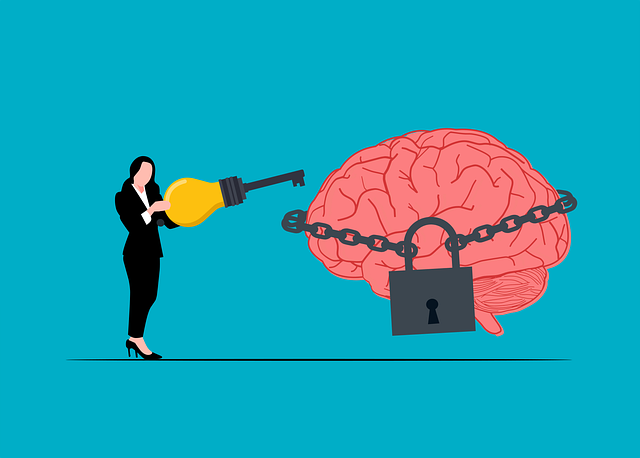Understanding the 8 Ball Coke: Effects, Risks, and Treatment Options
What is Cocaine and the 8 Ball?
Cocaine is a powerful and highly addictive central nervous system stimulant. Known for its illicit use, cocaine is often sold in various quantities, including the “8 ball of cocaine,” which refers to approximately 3.5 grams—one-eighth of an ounce. The term “8 ball” originated as street slang and is commonly used in drug culture. The cost of an 8 ball of cocaine can vary, but it is often associated with significant health effects, including immediate risks like overdose and long-term issues such as addiction and physical complications. Cocaine, a Schedule II drug, has limited medical use but a high potential for abuse and addiction, making its possession and distribution illegal in most contexts.
History and Cultural Context of Cocaine Use
Cocaine has a rich and complex history that spans over 5,000 years, dating back to the ancient civilizations of South America. The coca plant, from which cocaine is derived, was considered a sacred plant by the Incas and was used for medicinal, spiritual, and social purposes. In the late 19th and early 20th centuries, cocaine became popular in the United States and Europe as a medicinal and recreational substance, often used by artists, intellectuals, and members of the upper class.
However, as the dangers of cocaine became more apparent, its use became increasingly stigmatized, and it was eventually banned in many countries. Today, cocaine is a highly addictive and illicit substance, with a significant impact on individuals, communities, and society as a whole.

Cocaine Addiction and Drug Abuse
Cocaine addiction is a chronic and relapsing condition where individuals compulsively use cocaine despite negative consequences. Personalized treatment for cocaine addictions is crucial, as it allows for a compassionate approach to addiction recovery. The drug hijacks the brain’s reward system, producing intense feelings of euphoria and pleasure, which reinforce continued use. However, cocaine abuse comes with severe health risks, such as:
Increased blood pressure and heart attack risk
Brain damage and difficulty breathing
Mental health issues, including anxiety and psychosis
Overcoming cocaine addiction requires comprehensive treatment addressing physical, psychological, and social factors.
Effects of Cocaine Use
Cocaine use affects both the body and mind, with short-term and long-term implications. Cocaine affects the brain and body by impacting dopamine levels and the limbic reward system, leading to intense feelings of euphoria and pleasure, while also posing significant physical and mental health risks:
Short-Term Effects: Increased heart rate, elevated blood pressure, heightened energy, and intense euphoria.
Long-Term Effects: Addiction, cardiovascular problems, respiratory issues, and severe mental health challenges like mood disorders and psychosis.
The drug’s influence on the central nervous system accelerates communication between the brain and body, often leading to dangerous outcomes.
Cocaine’s Impact on Mental Health
Cocaine use can have a profound impact on mental health, leading to a range of negative effects, including anxiety, depression, paranoia, and psychosis. Chronic cocaine use can also lead to long-term changes in brain chemistry, making it difficult for individuals to experience pleasure or motivation without the substance.
Furthermore, cocaine use can exacerbate underlying mental health conditions, such as bipolar disorder or post-traumatic stress disorder (PTSD). The intense highs and lows associated with cocaine use can also lead to mood swings, irritability, and aggressive behavior.

Long-term Health Effects of Cocaine Use
Long-term cocaine use can have devastating effects on physical health, including cardiovascular disease, respiratory problems, and neurological damage. Cocaine use can increase heart rate and blood pressure, leading to heart attacks, strokes, and other cardiovascular complications.
Chronic cocaine use can also lead to respiratory problems, such as bronchitis and pneumonia, as well as neurological damage, including seizures, tremors, and memory loss. Additionally, cocaine use can lead to malnutrition, weight loss, and other health complications.
Cocaine Addiction Treatment Options
Cocaine addiction treatment often includes a combination of therapies, medications, support groups, and lifestyle adjustments. The cocaine cost, particularly the price of an ‘8-ball’ ranging from $60 to $150, can significantly impact addiction and the need for treatment, as the financial burden often exacerbates the cycle of dependency. Key treatment approaches include:
Behavioral Therapies: Techniques like cognitive-behavioral therapy (CBT) help individuals change negative thought patterns and behaviors.
Medications: Prescribed to alleviate withdrawal symptoms and cravings.
Support Groups: Organizations like Narcotics Anonymous (NA) offer community and accountability.
Inpatient (Residential) Treatment
Inpatient treatment provides a structured environment with round-the-clock care. The high coke costs can significantly impact individuals’ decisions to seek inpatient treatment for addiction. Benefits include:
Comprehensive therapy: Individual and group sessions.
Medical oversight: Constant monitoring and medication management.
Lifestyle changes: Education and skill-building for long-term recovery.
Duration can vary from 28 days to several months, depending on individual needs.
Outpatient Treatment
Outpatient programs offer flexibility, allowing individuals to continue daily responsibilities while receiving treatment. Individuals who abuse cocaine regularly often require ongoing therapy to address the challenges of regular use. Key components include:
Therapy sessions, both individual and group.
Medication management.
Customized recovery plans.
Programs typically last several weeks to months and are suitable for those with milder addiction or strong support systems.
Choosing the Right Treatment Program
Selecting between inpatient and outpatient care depends on various factors, such as:
Severity of addiction
Existing support systems
Personal preferences and co-occurring conditions
Consulting healthcare professionals or addiction specialists is crucial to making an informed decision.

Insurance Coverage for Cocaine Addiction Treatment
Most insurance plans cover substance use disorder treatment, including cocaine addiction. Cocaine prices can significantly impact the financial burden of treatment, making insurance coverage even more crucial. It’s important to:
Verify benefits with your insurance provider.
Work with treatment facility coordinators for clarity on coverage.
Understand the terms and conditions of the policy.
Legal Consequences of Cocaine Possession and Use
Cocaine is a highly regulated substance, and possession or use of cocaine can result in severe legal consequences. In the United States, cocaine is classified as a Schedule II controlled substance, and possession or distribution of cocaine can result in fines, imprisonment, or both.
The severity of the legal consequences depends on the amount of cocaine involved, as well as the individual’s prior record and other factors. In some cases, cocaine possession or use can result in mandatory minimum sentences, which can have a significant impact on an individual’s life and future.
Cocaine and Alcohol Use: Risks and Interactions
Combining cocaine with alcohol or other substances amplifies risks, such as:
Increased heart rate and blood pressure.
Higher likelihood of overdose.
Liver damage and other severe complications.
Combining crack cocaine with alcohol is especially hazardous due to the rapid onset of its effects and the increased potential for severe cardiovascular issues.
Such interactions are particularly dangerous and can lead to life-threatening situations.
Prenatal Cocaine Exposure and Pregnancy Risks
Cocaine use during pregnancy poses significant risks as it is a dangerous and addictive drug:
To the baby: Low birth weight, developmental delays, and increased risk of birth defects.
To the mother: Higher chances of miscarriage, stillbirth, and other complications.
Avoiding cocaine use during pregnancy is critical for maternal and fetal health.
Cocaine Overdose Risks
Cocaine overdose can occur unexpectedly, even in experienced users. Drug dealers often increase overdose risks by mixing cocaine with other substances. Factors contributing to overdose include:
High tolerance levels, leading to larger doses.
Cutting agents mixed with cocaine, increasing unpredictability.
Recognizing overdose signs and seeking immediate medical attention can save lives.
Cocaine Use in Different Demographics
Cocaine use affects individuals from all walks of life, regardless of age, sex, or socioeconomic status. However, some demographics are more vulnerable to cocaine use and addiction, including young adults, individuals with mental health conditions, and those from disadvantaged backgrounds.
According to the National Survey on Drug Use and Health (NSDUH), young adults aged 18-25 are more likely to use cocaine than any other age group. Additionally, individuals with mental health conditions, such as depression or anxiety, are more likely to use cocaine as a coping mechanism.
Overall, cocaine use is a complex issue that affects individuals, communities, and society as a whole. Understanding the history, cultural context, and impact of cocaine use is essential for developing effective prevention and treatment strategies.
Practicing Self-Care and Avoiding Triggers
Maintaining sobriety requires proactive self-care and trigger management:
Self-Care Activities: Regular exercise, meditation, and quality time with loved ones.
Trigger Avoidance: Staying away from environments or individuals associated with cocaine use. It is crucial to avoid places where illegal drug activities, particularly those involving cocaine, are prevalent.
Relapse Prevention Plans: Structured strategies to stay on track.
Getting Support from Loved Ones
A strong support network is vital for recovery. Seeking help for addiction to illegal drugs from loved ones is crucial. Loved ones can provide:
Emotional encouragement.
Accountability and motivation.
Guidance to professional resources and support groups.
Organizations like Narcotics Anonymous also play a critical role in fostering community and resilience.
Conclusion
Understanding the dangers of substance abuse, the implications of addiction, and the available treatment options is essential for individuals and families affected by this powerful drug. Seeking professional help, practicing self-care, and building a strong support system are vital steps toward recovery and long-term sobriety.






